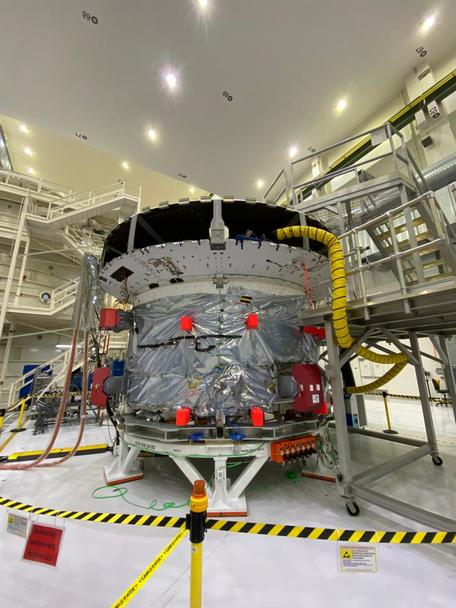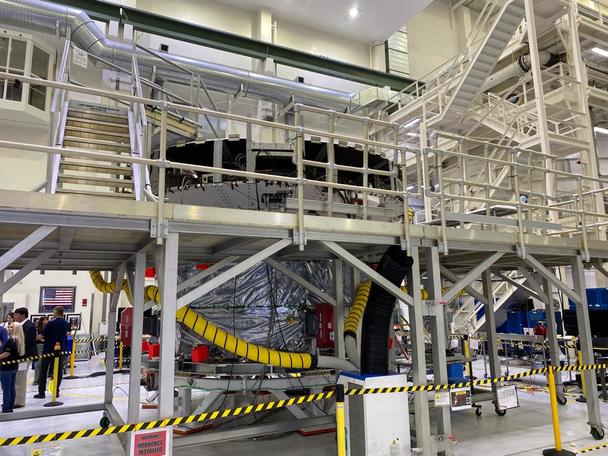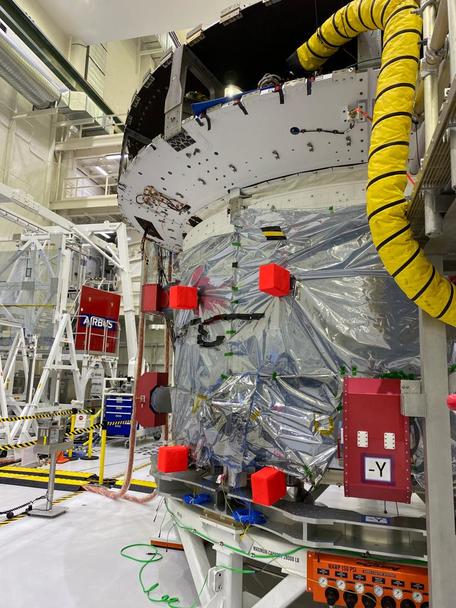First crewed Moon-mission gets closer

While Orion ESM-1 orbits the Moon to test its system during the Artemis I mission phase planned for launch in a few weeks, thesecond European Service Module (ESM-2) will undergo test campaigns on the crew module interfaces and overall system integrity for the first crewed Moon-mission planned for 2024.
We are in for an exciting time as NASA's Artemis missions take us to the Moon. It's been 50 years since humans last set foot on the Moon, and we are set to see it happening again by the middle of this decade. With the Artemis missions and the Orion spacecraft, the adventure will begin next month with the first uncrewed mission. But this is a decade-long story and exciting things have been happening on the way towards the second Artemis mission, as an assembly milestone confirms the maturity of our second European Service Module (ESM-2).
Airbus plays a very important role in the success of the Artemis missions, because the European Service Module (ESM), which Airbus is building for NASA, supplies the spacecraft with water, electricity and oxygen. The ESM also ensures propulsion and temperature regulation.

Artemis I will be used to extensively test the spacecraft's systems. For this purpose, Orion will orbit the Moon. This mission is uncrewed and the launch is expected in November 2022.
The second European Service Module for NASA's second Orion spacecraft is the first crewed mission and will carry humans around the Moon. The Artemis II launch is currently planned for 2024.
The ESM-2 was built at Airbus in Germany and has been at the Kennedy Space Center in Florida for the past year for assembly and testing with the Crew Module to make up the Orion spaceship. For this to happen, ESM-2 had to be installed with the crew module adapter (CMA) which connects the crew capsule with the service module, including all lines and cables. This part is done and the next milestone is to successfully complete the current test campaign to ensure all interfaces with the crew module are working as they should.
Lars Bauer, Lead System Engineer ESM-2, says “Building a spaceship takes time and it's not easy! That's why it's always special when everything comes together and that's what we see here with the second Orion spaceship now nearly fully assembled and in the final stages of test, to be ready to return to the Moon.”

The tests include pressure regulation and thermal cycle tests. The pressure regulation test ensures that the valves are working correctly with the flight control software of the spaceship. The thermal test takes place in a special chamber to prove that Orion is able to work when exposed to the different temperatures it will experience in space.
The last step is an acoustic test, during which various loudspeakers are aimed at the module to expose the ESM to different sound pressure levels. Sensors will register the vibrations of the structure and components to make sure it survives the large vibrations at launch. The final step for Airbus will then be the installation of the solar panels on the service module by the end of 2023.
Airbus plays a very important role in the success of the Artemis missions, because the European Service Module (ESM), which Airbus is building on behalf of ESA as part of Europe's contributions to NASA, supplies the spacecraft with water, electricity and oxygen. The ESM also ensures propulsion and temperature regulation.
As you can see, the sky is not our limit and we are ready to go to the Moon and beyond. Keep fingers crossed for Artemis I in November and stay tuned for more exciting stories about the Artemis missions, the European Service Module and the Orion spacecraft.
More information on Orion European Service Module